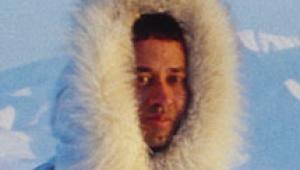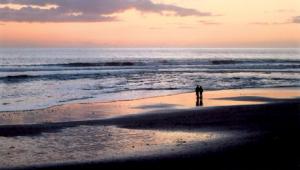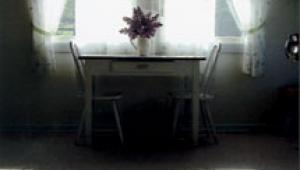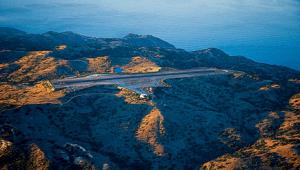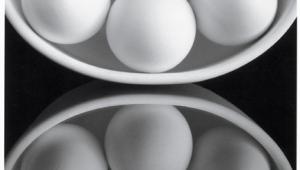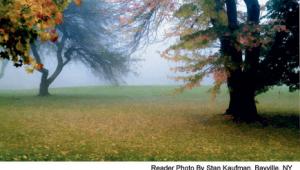Starting a Photo Gallery; David Schultz tells you how Page 2
The desire to have "something more stable" in the way of a year-round venue, as well as more control in exhibiting his work, prompted him to open his own gallery in 1997. According to Schultz, there are five other photo galleries on Main Street in Park City, "so [West Light] is not without competition, although I'm in a good location."
 |
|
|
In addition to the clientele who drop into West Light Images, he has corporate
accounts, which include Novell, Franklin Covey, Evans and Sutherland, and several
local hospitals--customers who have offices in Utah's scenic country.
Raymond James, an investment firm, has purchased a number of Schultz'
pieces, and, "out of that sale, some of their associates called and said
they were interested in purchasing some work for themselves."
Schultz also sells his images through catalogues, and via his Website, www.westlight.net.
"You need good inventory to open a gallery; a good collection of work,"
he advises. "The diversity of my work" is what Schultz feels sets
his photography apart from that found in other galleries. This diversity of
nature images includes charming old buildings, horses running in fields of snow,
buffaloes crossing rivers, and snow-clad peaks, all photographed in a variety
of locations. In addition to fine-art gallery sales, some of these scenic photos
have appeared in publications such as Travel & Leisure, Snow Country, Islands,
and National Geographic Traveler. He's also published a book of his images,
entitled Beautiful America's Utah.
 |
|
|
An Artist's Palette
"If there's a hallmark to my work, it's the intense colors
and finding the right light to bring out details in a scene." Schultz
says he believes in finding the best film (unless you shoot digitally), like
a painter with a palette.
He shoots with Nikon cameras, "everything from the FM to the F100."
He's a strong believer in using fixed-focal-length lenses ("if I
could take only two lenses in the field, I'd take a 28mm and a 105mm macro"),
and shoots in a manual mode "99.9% of the time." Schultz shoots
only transparencies, mostly Fujichrome Velvia (ISO 50). He scans his film, and
uses Photoshop to enhance his images. "I'm real strict," he
says. "I only use Photoshop for dodging, burning and color-correcting
techniques." He says he sometimes spends days working on his photos, and
seems to be very meticulous in creating the final image--he never wants
his prints to appear altered or manipulated.
For aspiring fine-art photographers, Schultz advises, "You must come up
with a good pricing structure. What is the competition doing?" He offers
customers framing as part of the package, with a choice of framed or unframed
prints. He says that doing his own framing saves him money, and tries to make
everything as standardized as possible. (Because framing is expensive, Schultz
cuts his own mats and does framing at the gallery, and he says he's found
it best to limit his inventory of mat/frame choices.)
 |
|
|
Marketing Your Work
One of his most important bits of advice is, "Find out if there's
a market for your work. If you're just starting out, take your photography
to other galleries to see if it will sell." Being in Park City, Schultz
says he gets a seasonal, high-end trade. He points out that it's a good
idea to market your work in an area where it's likely to sell, and advises
photographers, "Are people going to buy what you like to photograph, and
how do you compare with the competition?"
He emphasizes, "First, you need to decide what your product is going to
be," Schultz says he never discounts his work (except sometimes to high-volume
commercial clients), and keeps it very high-end. He also says that he factors
his time into the price of the final image. If you're going to sell limited-edition
prints, he points out, you must develop a good tracking system.
He says one must look at lease agreements carefully when considering gallery
locations, and that it's imperative to have a "lot of capital"
when launching a business. He emphasizes the fact that there are many expenses
in opening a gallery, and that you must have a good inventory "with a
diverse portfolio" in order to sell your photography.
 |
|
|
Schultz also suggests that you approach interior designers, restaurants, and
other venues besides galleries to exhibit your work. "Your images must
be consistently good," he adds.
When it comes to displaying photography, Schultz feels the lighting in his gallery
is very important. According to him, aspiring gallery owners must also learn
about shipping, marketing materials, business cards, and all the elements that
go into a successful business. He adds, "exposure is important--will
people be aware of you?" In addition to a good location, Schultz says
he's done a few other things to boost his visibility in the community,
such as some charity work. He's also written a few articles about his
travels in the local newspaper, in which his gallery is mentioned.
In addition to running his gallery, Schultz says that he gets out to experience
the world through his lens whenever he can. "I still love photography,
and there are many places I want to see!"
- Log in or register to post comments

